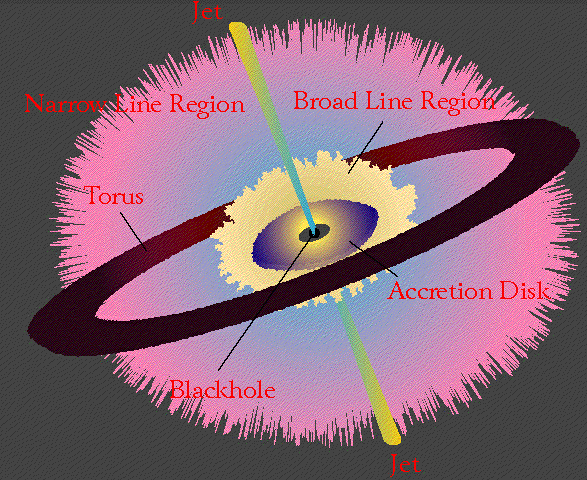Active Galactic Nuclei

Click on image for more info (not currently working properly
Introduction
In some galaxies the nucleus far outshines the rest of the galaxy.
These are known as "active galactic nuclei" (AGN).
Perhaps the most popularly known instance of AGN are "quasars"
which are AGN that are very distant, up to 60 billion light years away.
(Redshifts typically of 2 to 5.)
In some cases,
the size of the AGN is smaller than the size of our solar system.
There is currently much research going on trying to determine how something
smaller than a solar system can outshine entire galaxies.
Based on X-ray, radio, and other observations,
a good guess is that the power source in AGN
is a supermassive
blackhole.
The artist rendition above shows how this might look.
Although the blackhole itself is invisible, gas accreting,
or falling, onto a blackhole becomes hot and some of this energy escapes
for us to observe.
The gas and material appear to be confined to orbits in a disk shape
which is called an Accretion Disk.
Many AGN also show evidence for a huge
torus of gas around the blackhole.
There are two back to back jets
coming out of the black hole region in a direction perpendicular
to the Accretion Disk.
There is also a region around the blackhole
and Accretion Disk
which emits some radiation we can observe and it is characterized
as Broad Emission Lines Region.
Further out there is a region
which emits some radiation we can observe and it is characterized
as Narrow Emission Lines Region.
For more information, click on the AGN image above
or choose from the options below. (Whenever I figure out how to get
them working and written.)
More Information
Types of AGN and Unified Theory of AGN
AGN Paradigm model of AGNs
AGN Engine Model black holes power AGNs?
Blackholes and General Relativity
Jets and Relativistic Beaming
Glossary

